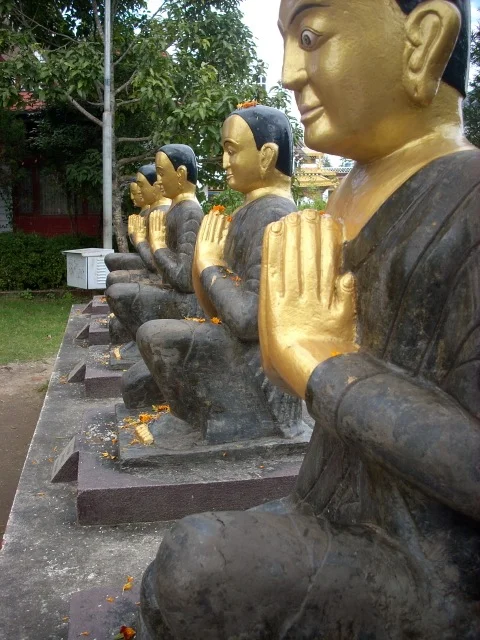Vastu-samye – do you see what I see??
vastu-sāmye citta-bhedāt tayor vibhaktaḥ panthāḥ
Each individual person perceives the same object in a different way, according to their own state of mind and projections. Everything is empty from its own side and appears according to how you see it. (PYS IV.15 translation from Jivamukti Yoga Chant Book)
It’s about perspective. Yours and mine. The objects of the material world – prakriti – that surround each and every one of us, are what they are. And yet, we each see something different. We perceive something different than the person standing right next to us for everything we see. This is true on a very practical, gross level and can be validated by simply placing the same object in front of 2 people and independently asking them to describe it. You will get different answers.
But, the more interesting side of this concept can be explored when we go deeper – beyond the obvious and into the subtle aspects of our perception. Why do we perceive differently? Well, because we each have uniquely colored/influenced thought patterns. And those thought patterns determine our response.
PYS I:5 says, vrttayah pancatayyah klista aklista – we have 5 categories of thought patterns and they are either klista meaning colored, afflicted by the kleshas or hindrances to yoga or not (aklista). These hindrances come about due to ignorance of Self, inflated ego, attachment to pleasure, aversion to pain, and clinging to life.
The yogi’s thought patterns begin to change dramatically when he accepts concepts such as emptiness, soul/Self, samskara and samsara. He begins to put everything in the light of the Self and under the scope of our ultimate reality – purusha. Purusha is the changeless reality, the lifeforce we all share that lies beneath the material world – prakriti. Purusha is not affected by the goings on of the world, and yet it remains the constant, strong, energetic force that supports the world. Without it prakriti would not exist and vice-versa.
The yogi’s perspective becomes tempered by the knowledge of purusha. He is less disturbed by what’s happening outside himself. His thoughts are less and less disrupted by the tragedies of the world. It’s not that he doesn’t care, he does, deeply. But, he accepts that the material world is one of change and his place in it is temporary. His efforts become increasingly directed at connecting more fully with his eternal, blissful, Self. There is nothing that has greater impact on his awareness of the objects placed before him. That impact is one of equanimity that brings a calmness to his existence. From this place he can operate in the world with great passion, but limited attachment. The ups and downs, successes and failures, do not have the impact on his efforts that they once did. He is able to stay the course, stay on the path, do the work – because it’s the right thing to do, not because he is seeking material, or even spiritual, gain. As Barbara Stoler Miller wrote in “Yoga – Discipline of Freedom”, “The path to freedom consists of a gradual unwinding of misconceptions that allows for fresh perceptions.”
For more on this sutra, see the Jivamukti Focus of the Month for March – “The Reality of the Enlightened Mind” written by Gabriella Bozic: http://jivamuktiyoga.com/teachings/focus-of-the-month/p/reality-enlightened-mind


